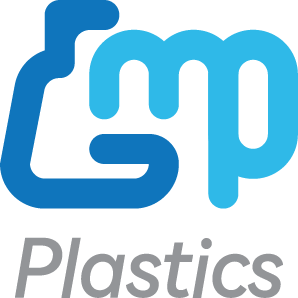Hello, science adventurers! 🚀 Today, we’re diving into the incredible world of cell migration and invasion—the way cells move, heal, and even misbehave in diseases like cancer. To study this fascinating process, scientists use a tool called the Migration and Invasion Assay, also known as the Wound Healing Assay. So, buckle up and get ready to explore the microscopic marathon that cells run every day! 🏃♂️🔬
What is Cell Migration, and Why is it Important? 🧬
Cells aren’t just tiny, stationary blobs floating in our bodies. Nope! They’re constantly moving, communicating, and reshaping tissues. Cell migration is crucial for processes like: ✅ Wound healing – When you get a cut, skin cells move to fill the gap. ✅ Embryonic development – Cells migrate to form tissues and organs. ✅ Immune response – White blood cells travel to attack infections. ✅ Cancer metastasis – Tumor cells move to other parts of the body (uh-oh!).
Understanding how and why cells migrate helps researchers develop treatments for wounds, inflammatory diseases, and cancer. And one of the best ways to study this? The Wound Healing Assay! 🎉
How Does the Wound Healing Assay Work? 🏗️
The Wound Healing Assay is a simple yet powerful experiment to study cell movement. Here’s how it works:
Step 1: Seed Cells in a 96-Well Plate 🧫
Scientists start by growing a layer of cells in a 96-well plate (think of it as a tiny petri dish with lots of compartments). These cells spread out and form a confluent monolayer—like paving stones covering a road. 🚧
Step 2: Create a Wound (Scratch the Monolayer!) ✂️
Once the cells are settled, researchers create a wound by scratching a thin gap in the layer. This simulates an injury, just like a cut on your skin. The space left behind acts as a migration zone, where cells will race to close the gap. 🏁
Step 3: Treat Cells with Stimulants or Inhibitors ⚗️
To test different conditions, scientists can add drugs or growth factors to see how they affect migration. Some compounds speed up cell movement (yay for faster healing!), while others slow it down (bad news for cancer cells trying to spread!).
Step 4: Capture Images Over Time 📸
Scientists take time-lapse images of the wound area to track how quickly cells move in. This can be done using brightfield, phase contrast, or fluorescence microscopy.
Step 5: Measure Wound Closure 📊
Using imaging software, researchers measure how much of the wound area is filled at different time points. The faster the wound closes, the more migratory the cells are.
Key takeaway:
-
Fast closure = High migration/invasion ability
-
Slow closure = Low migration/invasion ability
What Do the Results Mean? 📈
By analyzing wound closure rates, scientists can determine: ✔ How different drugs affect cell movement 💊 ✔ How aggressive cancer cells are 🦠 ✔ How well regenerative therapies work 🏥 ✔ The impact of genetic mutations on cell migration 🧬
Applications of the Wound Healing Assay 🌍
The Wound Healing Assay is used in many fields of science, including:
1. Cancer Research 🦠
One of the biggest concerns with cancer is metastasis—the ability of cancer cells to invade other tissues. Scientists use the Wound Healing Assay to test anti-cancer drugs that might slow or stop this migration.
2. Regenerative Medicine 🏥
For people with chronic wounds (like diabetic ulcers), researchers test new treatments to enhance cell migration and speed up healing.
3. Drug Development 💊
Pharmaceutical companies use the assay to screen compounds that affect cell movement—finding potential therapies for diseases like fibrosis or autoimmune disorders.
4. Tissue Engineering 🧫
Scientists are working on building artificial tissues by understanding how cells move and organize themselves. The Wound Healing Assay helps optimize these techniques.
Why is the Wound Healing Assay Important? 🏆
✔ Easy to Perform – Requires simple equipment and techniques. ✔ Cost-Effective – Uses standard lab tools, no expensive machinery needed. ✔ Fast Results – Can show effects in as little as 24 hours. ✔ Highly Versatile – Works for many cell types, from skin cells to cancer cells. ✔ Quantifiable – Allows for accurate measurements of cell migration rates.
It’s no wonder that scientists all over the world rely on this method to study cell movement and invasion! 🌍🔬
Fun Fact: Your Body is Constantly Healing Itself! 🤯
Did you know? Your body is always repairing tiny wounds, even if you don’t notice them! Every time you get a paper cut, a scrape, or even just normal wear and tear on your skin, your cells rush to the rescue—migrating and closing up the wound just like in the Wound Healing Assay!
Wrapping It Up 🎉
And that’s a wrap, science lovers! The Wound Healing Assay is a simple yet powerful experiment that helps us understand cell movement, wound healing, and cancer metastasis. By studying how cells migrate, researchers can develop better treatments, faster drugs, and even new regenerative medicine techniques.
So next time you scrape your knee, just remember—your cells are racing to heal you, just like in the lab! Until next time, stay curious, keep experimenting, and as always… SCIENCE RULES! 🔬🚀




